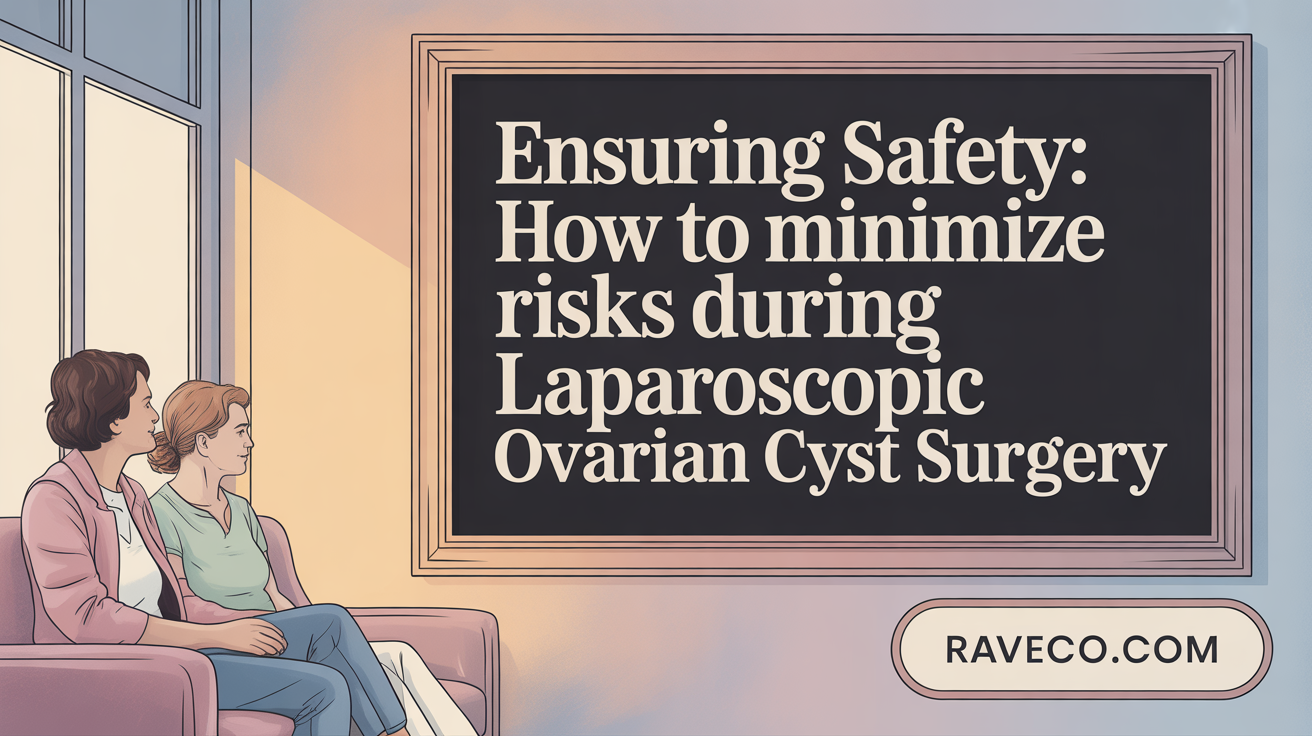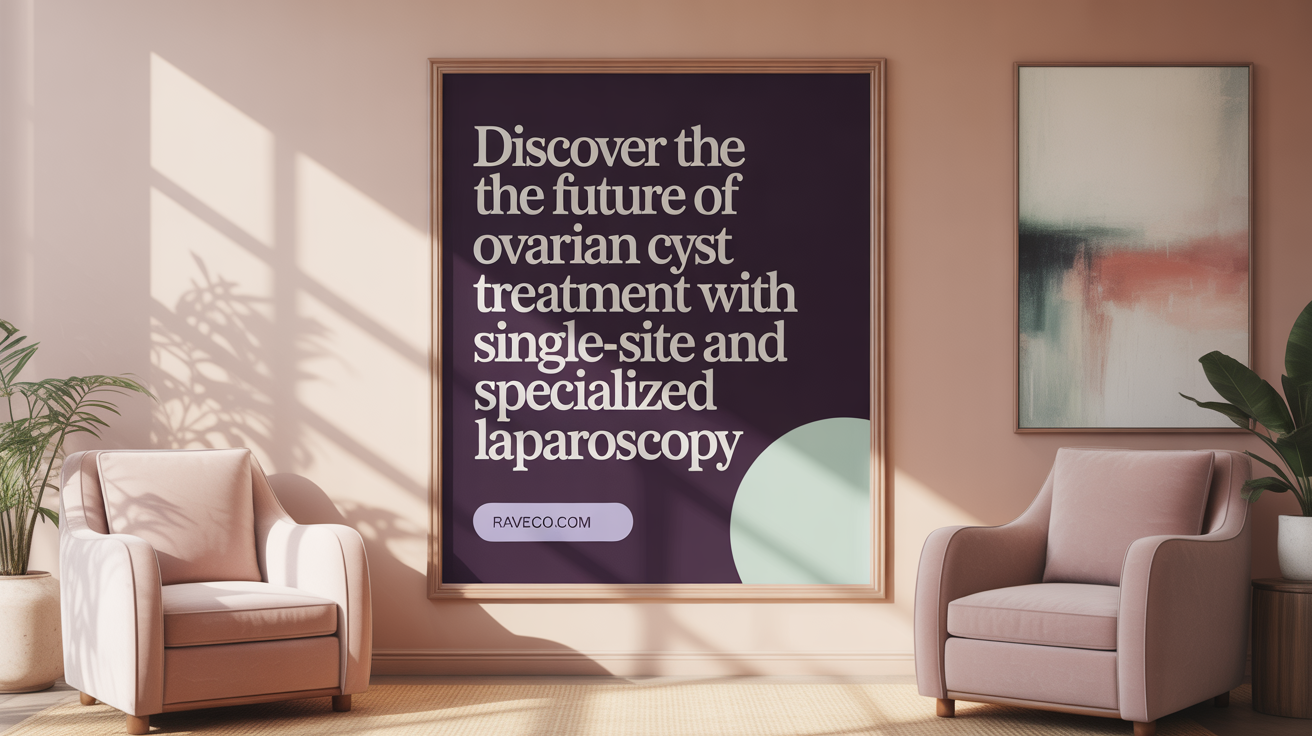Recognizing the Right Time to Address Female Infertility: Key Indicators and Expert Care in Queens

Unlocking the Potential of Laparoscopic Surgery
Ovarian cysts are non-cancerous sacs that commonly form within or on the surface of ovaries. While many cysts resolve without intervention, others require treatment to relieve symptoms, preserve ovarian function, and prevent complications. Thanks to advancements in minimally invasive techniques, laparoscopic surgery has become a preferred treatment approach, allowing surgeons to remove cysts through small incisions with precision. This article explores how laparoscopic surgeons treat ovarian cysts without invasive surgery, highlighting the techniques, benefits, safety considerations, and innovations that make this possible.
Minimally Invasive Options for Ovarian Cyst Treatment

What are the minimally invasive surgical options for treating ovarian cysts?
The primary minimally invasive approach for treating ovarian cysts is laparoscopic ovarian cystectomy. This procedure uses small incisions through which a thin, lighted instrument called a laparoscope is inserted. The surgeon then guides surgical tools to carefully remove the cysts while preserving as much of the ovarian tissue as possible.
Laparoscopy offers many advantages, including minimal scarring, less postoperative pain, and quicker recovery times. Many women go home the same day and resume normal activities within one to two weeks.
Besides traditional laparoscopy, advanced techniques like robotic-assisted surgeries are also employed. These use computer-controlled robotic arms to enhance surgical precision and maneuverability.
In cases where cysts are very large or appear suspicious for cancer, laparoscopic-assisted procedures such as extracorporeal cystectomy may be performed. This involves removing the cyst through small incisions while using laparoscopy for guidance.
For giant cysts, which are larger than 10 cm, minimally invasive techniques have been successfully applied, often with excellent safety profiles and aesthetic outcomes. The “bathtub method,” involving enucleation within an endoscopic bag, minimizes spillage and reduces inflammation.
However, if cysts are extremely large or malignant, open surgery (laparotomy) with a larger incision may become necessary. This allows for complete removal and proper assessment of the cysts or affected organs.
In summary, minimally invasive techniques are typically preferred for most ovarian cysts due to their safety, effectiveness, and faster recovery, with open surgery reserved for complicated or large cases.
Laparoscopic Ovarian Cystectomy: Techniques and Procedures

How is laparoscopic surgery used to treat ovarian cysts?
Laparoscopic surgery is a common and effective method for treating ovarian cysts, especially benign ones. The process involves making small incisions in the abdomen, through which a thin, lighted tube called a laparoscope is inserted. This device allows the surgeon to see inside the pelvis and carefully remove the cysts while preserving the ovary.
During the operation, specialized surgical tools are inserted through additional small incisions. The goal is to excise the cysts with minimal damage to surrounding healthy ovarian tissue. This procedure usually takes about one to two hours and is performed under general anesthesia. Its minimally invasive nature means less scarring, less pain, and a quicker recovery, often allowing women to return to normal activities within a week or two.
Laparoscopic ovarian cystectomy is typically safe and effective for benign cysts. Risks include bleeding, infection, injury to nearby organs, or cyst recurrence. Overall, it offers a high success rate in preserving ovarian function and fertility.
What techniques and procedures are involved in laparoscopic ovarian cystectomy?
The typical laparoscopic cystectomy begins with the creation of a pneumoperitoneum, where the abdomen is inflated with carbon dioxide gas. This improves visibility and space for manipulation inside the abdominal cavity.
Multiple trocars are then inserted through small incisions, usually near the navel and lower abdomen, to introduce the laparoscope and surgical instruments. The surgeon carefully examines the ovaries and surrounding tissues.
Dissection of the cyst from the ovarian tissue is performed using blunt and sharp techniques. Instruments like monopolar scissors or a coagulation hook set between 30-50W are commonly used to separate the cyst. Special attention is paid to keep the cyst intact during removal, utilizing specimen retrieval bags such as Espinar E-Sac® or Endocatch® to encapsulate the cyst.
Hemostasis is achieved using bipolar energy devices or hemostatic agents, minimizing bleeding. Once the cyst is detached, it can be extracted through the incision using the retrieval bag. The remaining ovarian tissue is often sutured with absorbable stitches like Monocryl® to promote healing and preserve ovarian function.
The procedure concludes with a thorough inspection for bleeding or other issues, removal of surgical tools and trocars, and closing the small incisions.
This minimally invasive approach results in less postoperative pain, quick recovery, and preservation of ovarian tissue, making it the preferred method for managing benign ovarian cysts.
Additional details
Procedures are often performed on an outpatient basis, with many women returning home the same day. The use of advanced tools and techniques, including specimen bags and precise dissection instruments, enhances safety and efficacy. While the procedure is generally safe, patients should be aware of potential risks such as organ injury or cyst rupture, which are minimized with experienced surgical teams.
For further information, searching for "Laparoscopic ovarian cystectomy surgical technique" can provide detailed procedural guides and visual resources. This approach continues to evolve, incorporating new technologies like robotic assistance to improve outcomes.
Minimizing Risks: Safety and Cyst Rupture Prevention in Laparoscopy
 Laparoscopic cyst surgery is a widely preferred minimally invasive approach, but it involves specific safety considerations and risks. The most common concerns include injury to nearby organs such as the bowel, bladder, or blood vessels, as well as bleeding, infections, and the potential for cyst rupture or spillage of contents. This is especially critical when malignancy cannot be entirely ruled out before surgery.
Laparoscopic cyst surgery is a widely preferred minimally invasive approach, but it involves specific safety considerations and risks. The most common concerns include injury to nearby organs such as the bowel, bladder, or blood vessels, as well as bleeding, infections, and the potential for cyst rupture or spillage of contents. This is especially critical when malignancy cannot be entirely ruled out before surgery.
Intraoperative rupture of ovarian cysts occurs in a notable percentage of cases, but it doesn't automatically impact the patient's prognosis when the cyst is benign. Nonetheless, careful management is essential to avoid contamination, infection, or spread of cyst contents, which could be problematic if the cyst is cancerous.
Other risks associated with the procedure include complications from anesthesia, formation of scar tissue, and, occasionally, the need to convert to open surgery if the cyst size makes minimally invasive removal challenging. Larger or suspicious cysts demand heightened caution, with thorough patient evaluation guiding the surgical approach.
To mitigate these risks, surgeons undertake several strategies. They develop the cyst carefully, using gentle dissection techniques to separate it from ovarian tissue, often employing blunt and sharp dissection tools like Maryland forceps. When handling the ovary, soft traction is applied cautiously to prevent rupture.
A key preventive measure is the use of specimen retrieval bags, such as Endocatch®, which encapsulate the cyst during extraction. This technique minimizes the chance of contents spilling into the abdominal cavity—a critical factor in reducing chemical peritonitis and tumor cell dissemination.
In addition, precise incision methods are employed. Making a controlled, minimal-notch in multicystic ovaries and using appropriate energy sources, like monopolar scissors at suitable settings, allows for safer cyst incision and aspiration.
Protective measures also include drying the cyst surface, applying surgical adhesives, or placing purse-string sutures around the cyst to contain it during removal. Surgeons may also puncture the cyst carefully under direct vision, draining it gradually, which reduces internal pressure and rupture risk.
In conclusion, a combination of meticulous surgical technique, specialized tools, and strategic planning helps ensure safety and minimizes the risk of rupture or spillage during laparoscopic ovarian cyst surgery. Proper case selection and surgical expertise further enhance outcomes, allowing most cysts to be safely removed with minimal complications.
Recovery and Outcomes After Laparoscopic Cyst Removal
What is the recovery process and what can be expected after laparoscopic cyst removal?
Recovery from laparoscopic ovarian cystectomy usually spans from one to three weeks. During this period, many patients notice an improvement in symptoms and gradually resume normal activities. Typically, individuals can go back to work within one to two weeks, depending on their job and overall health.
Many patients experience mild to moderate discomfort in the abdomen and shoulder regions, which tends to decrease over a few days. It is common to have light vaginal bleeding for about 24 to 48 hours following the procedure. To support recovery, short daily walks are encouraged as they help reduce the risk of blood clots without putting too much strain on the healing tissues.
Patients are advised to avoid strenuous exercises, heavy lifting, and vigorous physical activity for the first few weeks. This helps prevent complications and promotes proper healing. Internal recovery, including tissue healing and adjustment of the reproductive organs, generally takes around four to six weeks. Throughout this time, follow-up visits with the healthcare provider are essential to monitor healing and address any concerns.
While laparoscopic surgery is considered safe and effective, it carries a small risk of complications such as infection, bleeding, or injury to nearby organs. Although rare, cyst recurrence is also possible. Overall, most women report a smooth recovery with minimal discomfort and a quick return to their daily routines.
Advanced Minimally Invasive Techniques: Single-Site and Specialized Approaches

What specific minimally invasive methods, such as single-site laparoscopy, are used for ovarian cyst treatment?
One of the most innovative advances in ovarian cyst treatment is the use of single-site laparoscopy, also known as single-incision laparoscopic surgery (SILS). This method involves performing the entire procedure through a single small incision, typically located at the navel. This approach minimizes scarring and reduces surgical trauma, leading to faster recovery.
In addition to SILS, trans-umbilical approaches are popular for their aesthetic benefits, concealing scars within the natural fold of the belly button. Surgeons often employ specialized techniques like suturing the cyst for better traction and facilitating removal.
Some procedures incorporate the use of a small angiocatheter needle to aspirate and decompress large cysts prior to excision. This makes the cyst easier to remove and decreases the risk of rupture. Advanced tools, including flexible and articulating laparoscopes, improve visualization and access during these procedures.
Research indicates that these techniques are suitable for benign cysts generally larger than 5 cm, offering advantages such as less postoperative pain, reduced hospital stay, and excellent cosmetic results.
Both SILS and laparoendoscopic single-site (LESS) surgeries have shown to be safe and effective, even for large cysts, provided they are carefully selected and performed by trained surgeons. They often involve careful cyst puncture and aspiration to facilitate removal, all while preserving ovarian tissue.
Overall, these specialized minimally invasive procedures are transforming ovarian cyst management by combining precision, safety, and superior cosmetic outcomes.
The Future of Ovarian Cyst Treatment Is Minimally Invasive
Laparoscopic surgery has revolutionized how ovarian cysts are treated by offering a minimally invasive alternative that preserves ovarian function, reduces recovery time, and minimizes surgical trauma. With advances such as single-site laparoscopy, use of specimen bags, and refined surgical techniques, surgeons can safely remove cysts of varying sizes—including large and complex cases—while preventing cyst rupture and minimizing complications. Personalized care and surgical precision continue to enhance patient outcomes, making laparoscopic approaches the gold standard for managing benign ovarian cysts. As technology and expertise grow, minimally invasive surgery will remain at the forefront, helping countless women avoid the burdens of traditional invasive surgery.
References
- Ovarian Cystectomy: Purpose, Procedure, Risks & Recovery
- Ovarian cysts - Diagnosis and treatment - Mayo Clinic
- Laparoscopic Cystectomy | CU OB-GYN | Aurora, Denver, Boulder
- Giant Ovarian Cysts Treated by Single-Port Laparoscopic Surgery
- Minimally Invasive Gynecologic Surgery - Johns Hopkins Medicine
- Minimally Invasive Gynecologic Surgeries We Perform
- A new concept of minimally invasive laparoscopic surgery utilizing ...
- Laparoscopic Ovarian Cystectomy - Emory School of Medicine





.png)